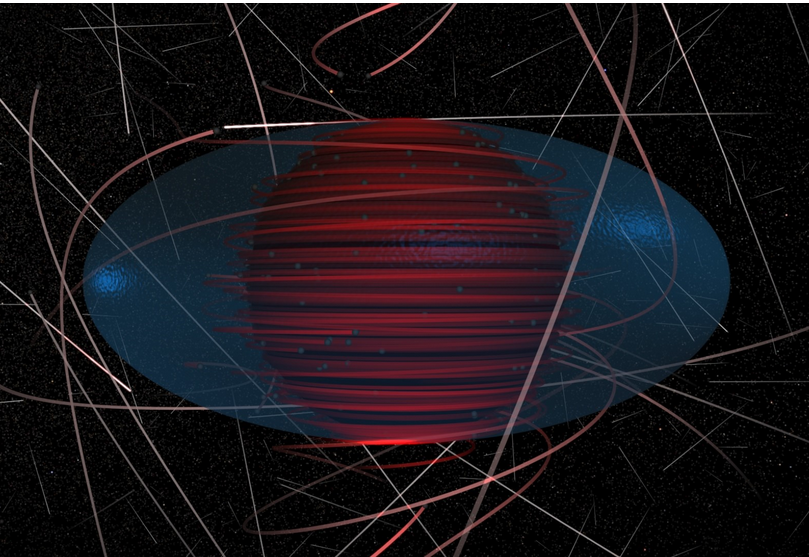Black Hole Laboratories for Dark Matter
- By Maggie Masetti
- August 5, 2015
- Comments Off on Black Hole Laboratories for Dark Matter
There is a lot we don’t know about dark matter – like what exactly it is. Because of this, we are always looking for ways to study it. It turns out that black holes might make the perfect laboratory environment for better understanding both black holes and the nature of dark matter.
We talked to Dr. Jeremy Schnittman, the Goddard astrophysicist who has been working on computer simulations exploring the connections between black holes and dark matter. We had the opportunity to chat with him and had him give us the basics of his ideas.
NASA Blueshift: What is dark matter? Why do we call it “dark”?
Dr. Jeremy Schnittman: Dark matter is a hypothetical particle that pervades the entire universe, contributing more than five times more mass than normal matter like protons and electrons. While we have not yet actually seen dark matter directly (and thus, we call it “dark”), we see ample evidence for its existence through indirect means such as gravity.
NASA Blueshift: What makes us think dark matter exists, if we can’t directly detect it?
Dr. Jeremy Schnittman: The force of gravity is directly proportional to the total amount of mass present. So if you can measure how a star or galaxy is moving due to gravitational forces, it is straight-forward to measure how much mass is pulling on it. By looking at radiation like starlight and radio waves, we can measure how much of this mass is due to stars and gas, and in most cases, the answer is “not nearly enough mass!” The rest is attributed to dark matter.
NASA Blueshift: Why would black holes be a good place to look for/at dark matter?
Dr. Jeremy Schnittman: To better understand normal particles like protons and electrons, we typically accelerate them in a particle collider, smash them together, and look at the pieces that fly out. Since dark matter only interacts with gravity, we need a gravitational particle accelerator. Nothing does gravity better than a black hole! So not only does it attract a higher density of particles, but also increases the energy of their collisions.
NASA Blueshift: Why do researchers use computer simulations? How do they differ from direct observations?
Dr. Jeremy Schnittman: Before building a large, expensive space telescope, it is crucial to have a reliable prediction for what it will see. Computer simulations are much cheaper, and with increasing computer power, they are increasingly reliable. Yet experience teaches us to always expect the unexpected, and computer simulations almost by definition can ONLY predict things that are already expected. So it is always worth the time and money to go out and do real observations.

This visualization shows dark matter particles as gray spheres attached to shaded trails representing their motion. Redder trails indicate particles more strongly affected by the black hole’s gravitation and closer to its event horizon (black sphere at center, mostly hidden by trails). The ergosphere, where all matter and light must follow the black hole’s spin, is shown in teal. The black hole is viewed along its equator and rotates left to right. Credits: NASA Goddard’s Scientific Visualization Studio and NASA Goddard/Jeremy Schnittman

This image shows the gamma-ray signal produced in the computer simulation by annihilations of dark matter particles. Lighter colors indicate higher energies, with the highest-energy gamma rays originating from the center of the crescent-shaped region at left, closest to the black hole’s equator and event horizon. The gamma rays with the greatest chances of escape are produced on the side of the black hole that spins toward us. Such lopsided emission is typical for a rotating black hole.
Credits: NASA Goddard/Jeremy Schnittman
NASA Blueshift: What’s next for this research after this simulation?
Dr. Jeremy Schnittman: Fortunately, we already have a space telescope in place for these observations: the Fermi Gamma-ray Observatory. We plan to use existing data from Fermi to search for evidence of dark matter around known black holes. At the very least, we expect to be able to place new, more stringent limits on the properties of dark matter, such as the particle mass and cross section.
NASA Blueshift: Thanks, Jeremy!
You can read more about his computer simulations in this NASA feature article, and you can also watch the below video:


